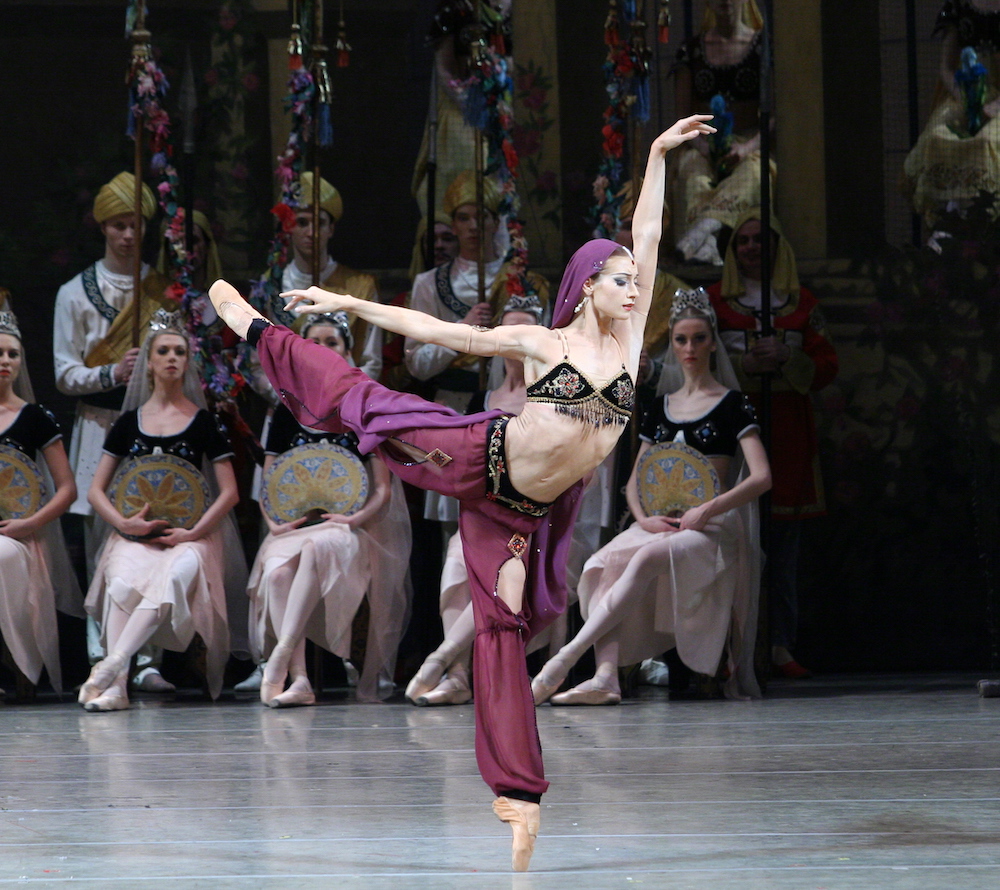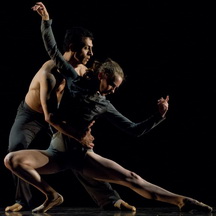Watching the Mariinsky Ballet’s La Bayadère reminds the viewer that ballet has a deep history, which is not merely relived by the company but revitalized and reinscribed. What lies behind that vivid portrait of a cultural world that is over 150 years old is the company’s dedication to and perfection of classical ballet technique.
All of that was on view at Cal Performances last week when the company brought its opulent production of the Petipa ballet to Zellerbach Hall, including over 210 performers, dancers, musicians and supporting staff. The version currently presented by the Mariinsky is a 1941 revision of Petipa’s ballet by Vladimir Ponomarev and Vakhtang Chabukiani.

La Bayadère was set and presented by Marius Petipa in 1877. The French dancer and choreographer had taken over the role of ballet master at the Imperial Theaters in St. Petersburg in 1869. He would not only raise the quality of the dancers’ training but would grace the music of Russia’s great Romantic composers with impeccable choreography that is often updated but never erased. It sets a standard with its purity of line and challenging technique. No matter how preposterous the story, the formal beauty of the dance never wavers.
Petipa’s ballets would float the company through a series of name changes and political environments, until it became today’s Mariinsky Ballet, reverting to the company’s pre-Soviet name. Throughout its history the company has produced illustrious dancers, from Pavlova and Nijinsky to Makarova and Baryshnikov. The company produced George Balanchine, who would develop a new form of classical dance within the New World culture. Even so, Petipa’s choreography left an indelible mark on Balanchine’s work, which can be seen in his clarity and daring.
Like most of the ballets of the time, La Bayadère is a study in exoticism, ethereal femininity and the merging of unrequited and eternal love. As is often the case its action is driven by the fickleness of male love. The warrior Solor pledges his love to the temple dancer Nikia, only to abandon that love for that of the Raja’s daughter, Gamzatti, to whom he had been promised since childhood. At the wedding celebration, Nikia is given a basket of flowers that contains a poisonous snake. Her death throws Solor into deep regret, and he pursues her to the Land of the Shades, where a corps de ballet in gauzy white dances a solemn but formal geometry of placement and sustained movement. Against this background of graceful restraint the passionate loss of the two lovers is danced out in haunting tenderness.
Nikia was danced by Ekaterina Kondaurova, whose sinuous back and elegant lines are a wonder to behold. She embodies a quintessential spirit, suspended between the gravity of the real world and the sadness of music conveyed through particles of air. Andrei Yermakov danced Solor, whose every gesture was exquisitely articulated and who had a breath-taking ballon. Yekaterina Chebykina danced a fiery Gamzatti, willful and material. A variety of roles were taken on by the wonderful dancers of the company.
All this paraded before intricately painted sets portraying ochre buildings in the midst of tropical greens. The sets had a softness of intention that you don’t find in today’s starker video projections and glaring lights.
At times the ballet seemed comic in its 19th-century tropes and naïve exoticism, but it’s impossible to fault such beautifully trained dancers or the sincerity of their interpretation. Much can be learned in that virtue.
—Jaime Robles
